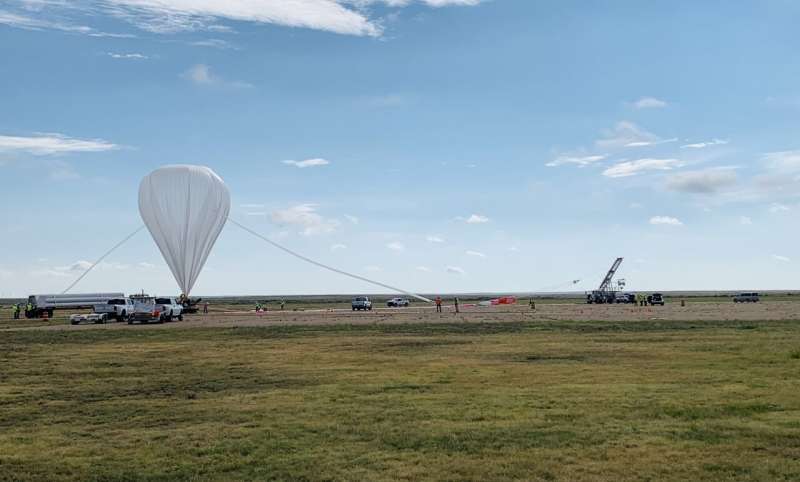After this fall's engineering test flight, a flight on a long-duration super pressure balloon is planned.
The EXCITE mission team is composed of members from NASA's Goddard Space Flight Center, Arizona State University, Brown University, Cornell University, University of Oxford, University of Rome, StarSpec Technologies, Inc., University of Toronto, and University College London.
Some additional missions set to fly during the fall campaign include:
- Gamma-Ray Polarimeter Experiment (GRAPE): Instrument will measure the Crab nebula to demonstrate imaging and polarization of gamma-ray bursts.
- Jet Propulsion Laboratory (JPL) REMOTE: Instruments will address science issues in NASA's Atmospheric Composition focus area, including providing validations data for NASA satellites.
- Faint Intergalactic-medium Redshifted Emission Balloon (FIREBall-2): The mission features an ultraviolet multi-object spectrograph designed to detect faint emission from the circumgalactic medium of nearby galaxies.
- High-Altitude Student Platform (HASP): This platform assists in training the next generation of aerospace scientists and engineers. On board experiments include an Ozone detection system and an electron spectrometer telescope. A flight test of experimental hardware for larger future experiments will be conducted.
- Testbed for High-Acuity Imaging and Stable Photometry and Image-Motion Compensation (THAI-SPICE): The goal of this project is to build and demonstrate a fine-pointing system for stratospheric payloads with balloon-borne telescopes.
- Thermalized Neutron Measurement Experiment (TinMan): This mission features a 60-pound payload designed to address concerns about thermal neutron effects on avionics.
Sixteen smaller payloads, called piggyback missions, will ride along during the launches as a valuable and efficient means of supporting additional science and technology development. One of these missions, ComPair, is a Goddard instrument that will test new technologies for studying gamma rays.
Scientific balloons are a quick and cost-effective way to test, track, and recover scientific experiments for NASA and universities from all over the world. Zero Pressure Balloons, used in the upcoming fall campaign, feature open ducts that allow gas to escape and prevent an increase in pressure from inside the balloon. Gas expansion occurs as it heats during the balloon's rise above Earth's surface. These balloons typically have a shorter flight duration due to the loss of gas from the cycle of day to night.
To follow the missions in the 2023 Fort Sumner fall campaign, visit NASA's Columbia Scientific Balloon Facility website for real-time updates of a balloon's altitude and GPS location during flight.
Provided by NASA



